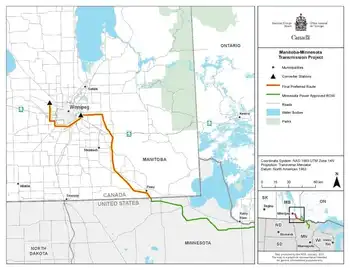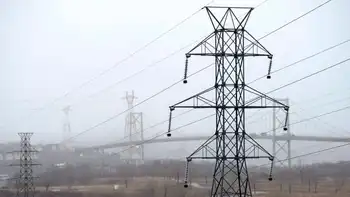Are transmission lines holding America back?
WASHINGTON - - HereÂ’s a striking data point on renewable energy from this new report by the PresidentÂ’s Council on Jobs and Competitiveness: There are currently 275,000 megawatts worth of proposed wind-power projects in the United States. For context, the capacity of the entire U.S. coal fleet, providing half of the countryÂ’s electricity, is 315,000 megawatts. Now, turbines arenÂ’t a perfect substitute, because the wind isnÂ’t always blowing, but thatÂ’s a huge amount of wind potential. So whatÂ’s holding those projects back? There just arenÂ’t enough wires to connect them all.
Transmission is an underrated issue in energy policy. The process for locating and permitting new wires was established way back in 1935, when most power plants were situated close to the people who used the electricity. That process works okay for building a natural-gas turbine near town. ItÂ’s not as useful for transporting wind power from large, remote farms out in North Dakota to cities in California. Right now, building big new transmission lines is an enormous hassle. One 90-mile line from West Virginia to Virginia, the council report notes, took American Electric Power 13 years to site. Is that fixable?
By and large, the hurdles arenÂ’t technological. TheyÂ’re political. Dozens of agencies are typically involved in the permitting process. There are state authorities, plus hordes of independent grid-owners, plus landowners who would need to allow new transmission lines through their property, plus environmentalists worried that tramping new lines through places like the Mojave Desert will wreak havoc on endangered habitats. WhatÂ’s more, many state governments arenÂ’t thrilled with spending money on grid upgrades that would primarily benefit wind farms in neighboring states.
Technically, there’s a way to streamline this process. The 2005 energy bill gave the Department of Energy legal authority to approve large new transmission projects if states wouldn’t cooperate with one another. The jobs council report recommends the government use this authority. But that’s not so simple. Under George W. Bush, the department identified two grid areas — one in the Mid-Atlantic and one in the Southwest — as national priorities. But those areas spanned 10 states and 220 congressional districts. Fourteen senators from both parties including Joe Biden! quickly fired off a letter warning that the federal government was acting too aggressively.
That’s why a growing number of people who work in the industry are now questioning whether massive, centralized clean-energy projects really are the future. What good are huge solar farms in the desert if you can’t get them wired? Perhaps smaller, distributed sources of clean energy — rooftop solar panels, say, or small turbines — that don’t need fancy new transmission lines are a more promising option.
“It’s long been conventional wisdom that it’s much easier and cheaper to build those big plants,” Allan Schurr, vice president of strategy and development at IBM’s energy and utilities group, told me. “But, when we interviewed customers, we found a strong appetite for individuals having control over their own energy future.” As an alternate model, Schurr points to Germany, where well-crafted incentives for rooftop panels have transformed the cloudy nation into a solar leader. And there’s a lot of untapped potential here: the National Renewable Energy Lab has estimated that we have 661,000 megawatts of rooftop-solar resources here in the United States.
Does that seem difficult to imagine? Perhaps. Then again, every few months a new report comes out lamenting our need for big new transmission lines, and the political hurdles never seem to get any easier.
Related News

Ontario Providing Support for Industrial and Commercial Electricity Consumers During COVID-19
TORONTO - Through an emergency order passed today, the Ontario government is taking steps to defer a portion of Global Adjustment (GA) charges for industrial and commercial electricity consumers that do not participate in the Regulated Price Plan for the period starting from April 2020. This initiative is intended to provide companies with temporary immediate relief on their monthly electricity bills in April, May and June 2020. The government intends to keep this emergency order in place until May 31, 2020, and subsequent regulatory amendments would, if approved, provide for the deferral of these charges for June 2020 as well.
This…




